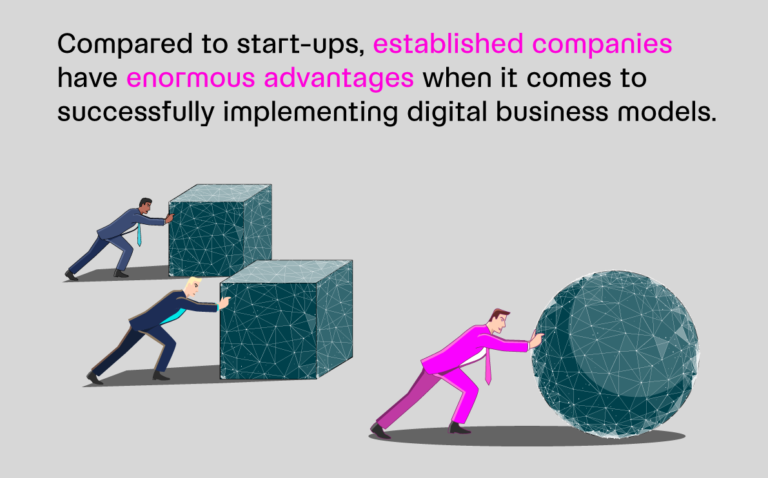Creating a successful digital product is tough. Only 30% of new digital products succeed in attracting enough customers to be profitable. Because of the high failure rate, the only sensible strategy is to create a minimum viable product (MVP) and test it. However, even the path to creating digital MVP is filled with obstacles.
Here are five tips that will help you overcome the challenges in creating a successful digital MVP.
Defining the Product
One reason many digital products fail is that they are not tightly defined. You need to understand more than just what the product will do. You need to understand why it’s needed, who needs it, and how to communicate the value proposition of the product.
If you are fuzzy at the beginning of the building process, chances are your MVP will become a least valuable product in the minds of the users.
The experts at Venture Leap recommend performing a pre-mortem early on in the product development process to prevent common mistakes and to make sure the product is fully defined before a lot of time and money is invested in development.
Selecting the Most Valuable Features
It’s easy to be impressed with our own ideas. But, for your product to succeed, you need it to over-deliver on customer expectations. This is a second major reason many digital products fail—users are underwhelmed by what they see.
The only way to create an MVP that impresses users is to focus on the most valuable features. This is different from the easiest features to code or the coolest features to focus marketing around.
Your MVP needs to add value to the lives of the users. Select the three features that will make the biggest difference in the workflow of your target market.
By focusing the decisions about what features to include in the launch on the value you are providing to the end-user, you will increase the chances that your digital product survives long enough to be upgraded.
By focusing on a narrow set of features, you will have an easier time building a robust technological foundation that you can build on in later versions.
Controlling Costs and Getting Estimates
The purpose of creating an MVP is to preserve capital while you collect real-world feedback for the net iteration. This strategy will fail if you let costs spiral out of control.
When it comes to controlling costs, you need an experienced project manager who understands how to deliver complex projects on time and on budget. If nobody in your organization has that skill set, you need to outsource the project management to an experienced professional.
You also need an efficient system for soliciting and evaluating bids. This includes writing a clean request for proposal (RFP) that you can send out to potential partners. Inexperienced executives usually make one of two mistakes, they either choose the lowest cost bid, or they choose the bid that is in the middle. While costs matter, the cost should only be one factor in evaluating estimates.
You also need to evaluate the reputation for quality and timeliness of your partners. The best vendors may come from anywhere on the cost spectrum. You need to find the vendor that not only fits your budget, but that also gets your vision for the end product.
The fastest way to ruin a promising digital product is to have to replace contractors part-way through the development process.
Putting Teams Together
When creating a product with a digital product studio like Venture Leap, you are building two different teams. In addition to your inside team that delivers the domain knowledge and valuable feedback, your partner needs to find a suitable setup of the right people. Tech and product knowledge are the central parts of each project. In many cases though, strategic, operational and business expertise play a role that is just as important. Moreover, for your MVP to come in on time and on budget, you need to create a process that allows the internal and external teams to communicate effectively.
Communication needs to go beyond a Slack channel. You need a set of expectations for timetables, quality, and cost. You also need a way to hold everyone accountable for the expectations.
The first step in the team building process is choosing the right leader and allowing that leader to have a voice in forming both the internal and external team. Even the most talented teams will flounder with the wrong leader.
It should go without saying that your project leader needs to be passionate about the project, but not dogmatic about the methods needed for accomplishing the mission.
Start Small and Iterate
Even though the MVP strategy is widely accepted as the best way to develop digital products, many organizations still make the mistake of creating something too big. Start as small as possible and iterate. Your MVP should be focused on solving one problem.
You can always add features later if users love the first product. It’s easier to troubleshoot a single-solution product than it is a product suite that does everything.
Your technological foundation is more critical to your future success than the number of features your MVP has. Remember, Microsoft’s world-conquering success was originally built on DOS. It had a sound technological foundation that allowed it to iterate and branch out into different products and technologies.
Creating anything takes courage. You are about to embark on a wonderful, stressful journey. If you want to beat the odds, make sure that your digital product is built around the value you provide the user. You can fix almost any other mistake. But you can’t earn back the trust from users who feel let down from your product.
At Venture Leap, we help entrepreneurial teams build and launch their digital products. Get in touch if you want to know how this works.




